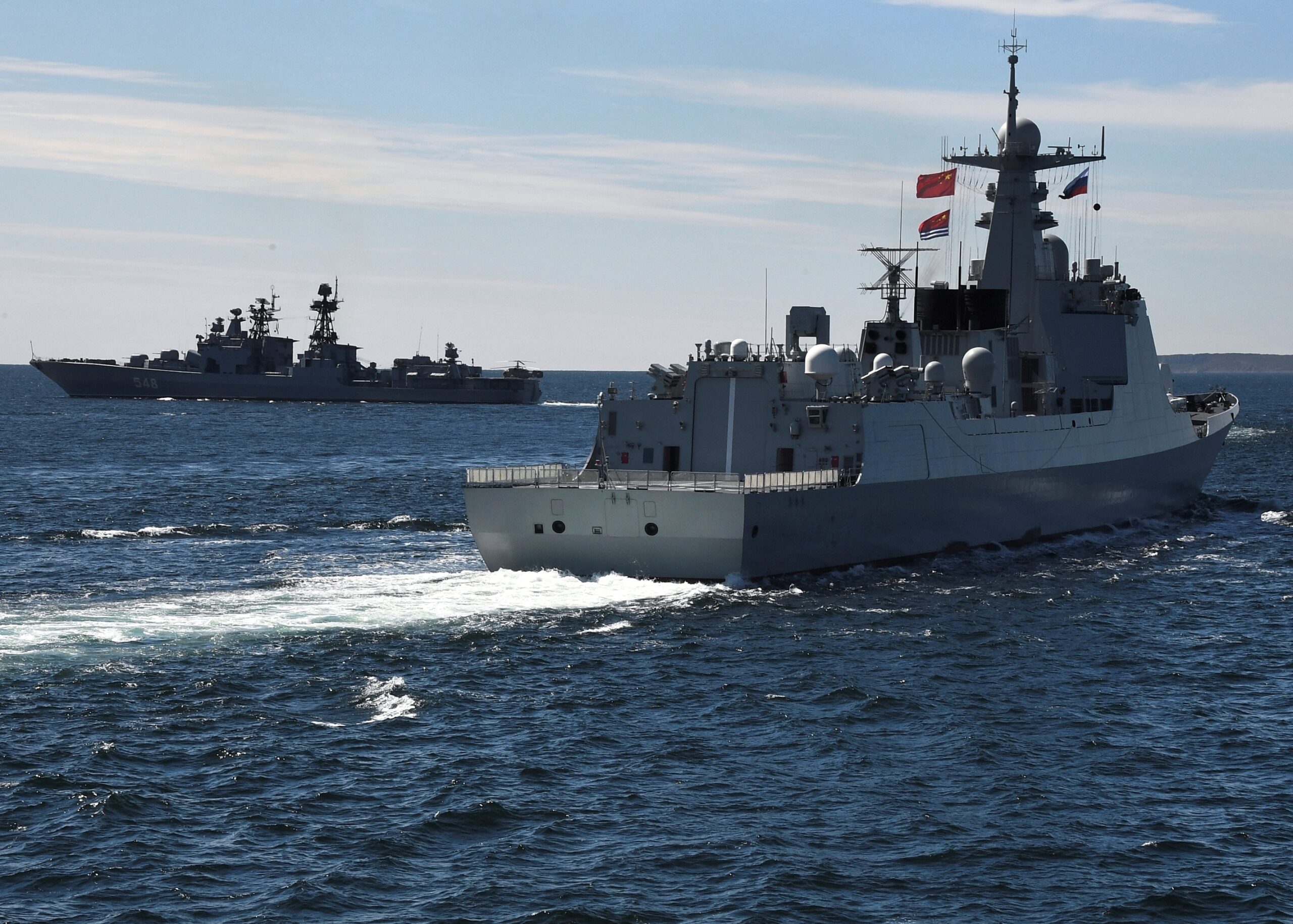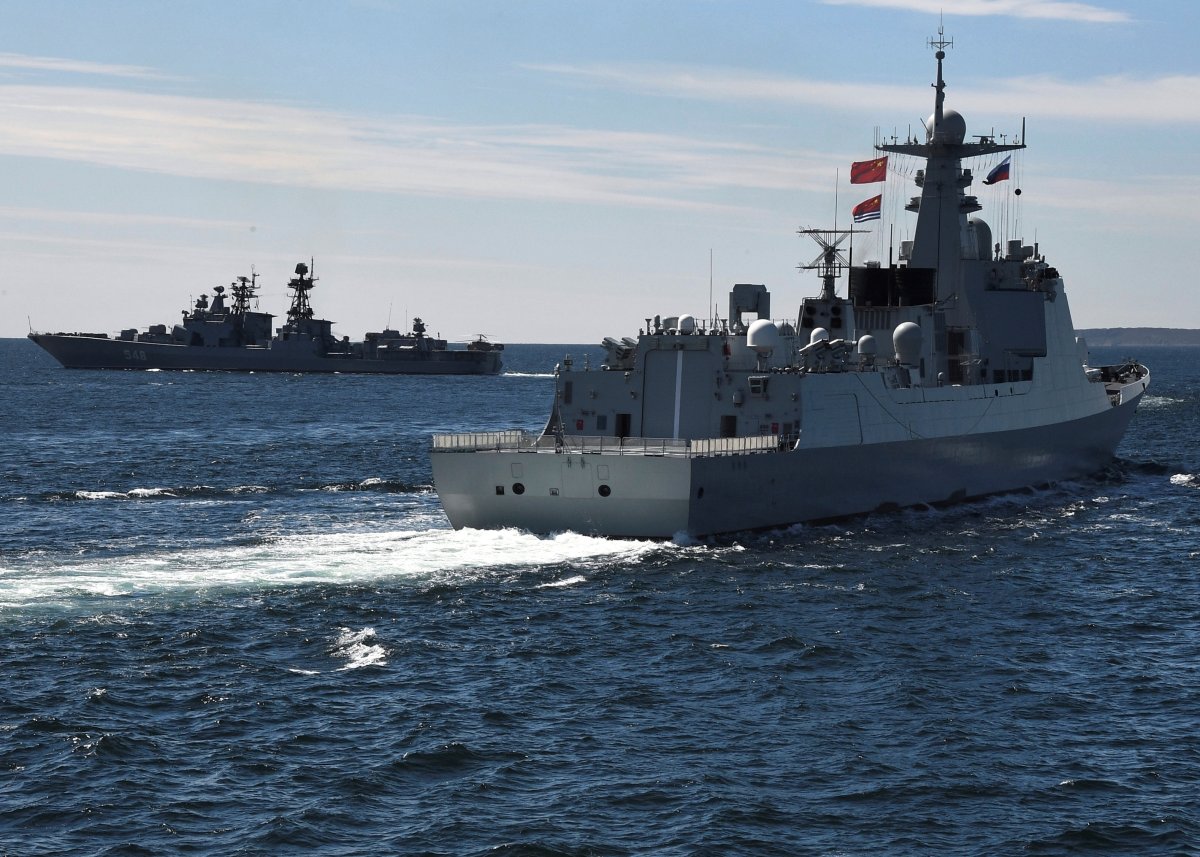
Japan detected Russian and Chinese navies operating near its territory in recent days, as the country conducted a war game with the United States featuring anti-ship weapons.
Newsweek has e-mailed both the Russian and Chinese foreign ministries for comment.
Why It Matters
Japan is part of the First and Second Island Chains—two north-south defensive lines across the Western Pacific—under America’s containment strategy, aimed at projecting military power to deter and defend against potential aggression by U.S. adversaries.
Russia and China have deepened military ties under the so-called “partnership without limitations” through joint naval exercises and patrols near Japan. Both countries’ navies often use international straits off Japan’s coastline for deployments to the wider Pacific.
What To Know
American and Japanese forces are currently conducting Exercise Resolute Dragon 25 across Japan, where they are demonstrating ship-sinking capabilities, including the U.S. Typhon missile system and the Japanese Type 12 surface-to-ship missile system.
The Joint Staff of Japan’s Defense Ministry reported on Tuesday that a Russian naval intelligence collection ship, identified as the Kurily by its hull number, has been sailing along the east coast of Honshu—one of Japan’s four main islands—since earlier this month.
The vessel reached the Pacific Ocean through the Tsugaru Strait north of Honshu after leaving Russia’s Far East, according to a map provided by Japanese authorities. It continued southward and arrived near Japan’s southwestern outlying islands last week.
9/9、ロシア海軍ヴィシニャ級情報収集艦が三宅島の接続水域内を航行し、御蔵島と八丈島の間の接続水域内を南西進したことを確認しました。… pic.twitter.com/Wxo2FiOcOu
— 防衛省統合幕僚監部 (@jointstaffpa) September 16, 2025
Between Saturday and Monday, the Kurily sailed south of Japan’s Okinawa Island as it left the Philippine Sea—part of the Western Pacific—for the East China Sea. Japan has deployed ships and aircraft to monitor and collect intelligence on the Russian vessel.
Meanwhile, four Chinese naval ships were detected operating near Japan’s southwestern islands as they passed through the Miyako Strait, between Miyako and Okinawa Islands, a major gateway for Chinese naval deployments beyond the First Island Chain.
According to their hull numbers, two of the Chinese vessels were the destroyers CNS Suzhou and CNS Dazhou. They left the East China Sea for the Philippine Sea via the Miyako Strait on Saturday, but the Dazhou returned to the East China Sea on Tuesday.
The remaining Chinese vessels were identified as the frigate CNS Huanggang and the replenishment ship CNS Chaohu. They arrived in the Philippine Sea from the East China Sea on Sunday, following a southeastward transit through the Miyako Strait.
9/13、中国海軍ルーヤンⅢ級ミサイル駆逐艦2隻が、沖縄本島と宮古島との間の海域を南西進し、太平洋へ向けて航行したことを確認しました。… pic.twitter.com/gxWyv5SWrq
— 防衛省統合幕僚監部 (@jointstaffpa) September 16, 2025
What People Are Saying
Japan’s defense white paper 2025 commented: “The Russian military is continuing active military activities in the vicinity of Japan and its surrounding areas, showing its tendency to deploy the latest military equipment in the Far East. Russia’s military activities in the Indo-Pacific region, including Japan, coupled with its strategic partnership with China, are posing a strong security concern.”
Senior Colonel Wu Qian, spokesperson for China’s Defense Ministry, said in December 2024: “Japan has been closely tracking, monitoring and harassing operations of Chinese vessels and aircraft, which has endangered the safety of the Chinese vessels and aircraft, and can easily trigger incidents at sea or in the air.”
What Happens Next
Russia and China are likely to continue their naval activities in waters around Japan. It remains to be seen how Japan will enhance its defense posture with U.S. assistance.

Vitaliy Ankov/Sputnik via AP




